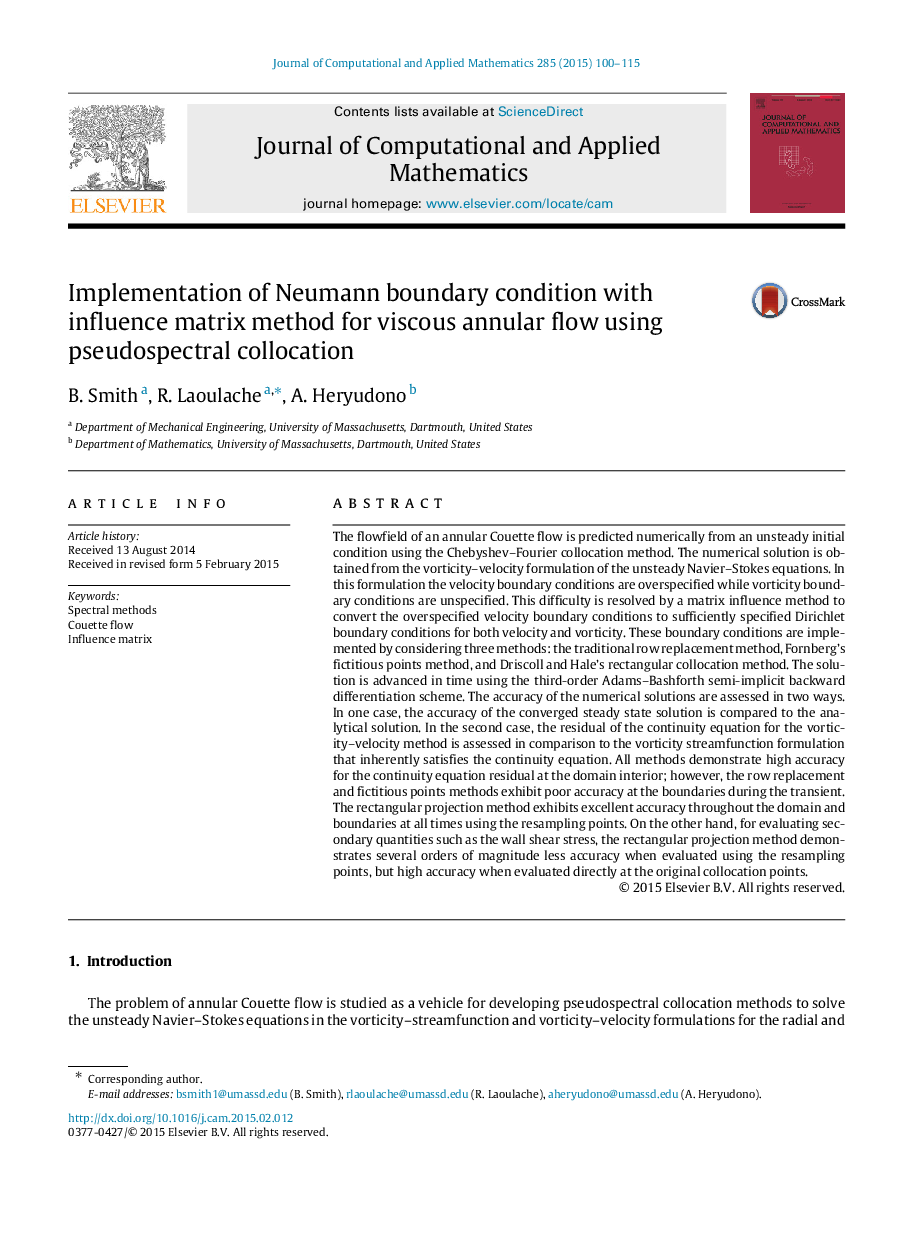| کد مقاله | کد نشریه | سال انتشار | مقاله انگلیسی | نسخه تمام متن |
|---|---|---|---|---|
| 4638477 | 1632006 | 2015 | 16 صفحه PDF | دانلود رایگان |
The flowfield of an annular Couette flow is predicted numerically from an unsteady initial condition using the Chebyshev–Fourier collocation method. The numerical solution is obtained from the vorticity–velocity formulation of the unsteady Navier–Stokes equations. In this formulation the velocity boundary conditions are overspecified while vorticity boundary conditions are unspecified. This difficulty is resolved by a matrix influence method to convert the overspecified velocity boundary conditions to sufficiently specified Dirichlet boundary conditions for both velocity and vorticity. These boundary conditions are implemented by considering three methods: the traditional row replacement method, Fornberg’s fictitious points method, and Driscoll and Hale’s rectangular collocation method. The solution is advanced in time using the third-order Adams–Bashforth semi-implicit backward differentiation scheme. The accuracy of the numerical solutions are assessed in two ways. In one case, the accuracy of the converged steady state solution is compared to the analytical solution. In the second case, the residual of the continuity equation for the vorticity–velocity method is assessed in comparison to the vorticity streamfunction formulation that inherently satisfies the continuity equation. All methods demonstrate high accuracy for the continuity equation residual at the domain interior; however, the row replacement and fictitious points methods exhibit poor accuracy at the boundaries during the transient. The rectangular projection method exhibits excellent accuracy throughout the domain and boundaries at all times using the resampling points. On the other hand, for evaluating secondary quantities such as the wall shear stress, the rectangular projection method demonstrates several orders of magnitude less accuracy when evaluated using the resampling points, but high accuracy when evaluated directly at the original collocation points.
Journal: Journal of Computational and Applied Mathematics - Volume 285, September 2015, Pages 100–115
